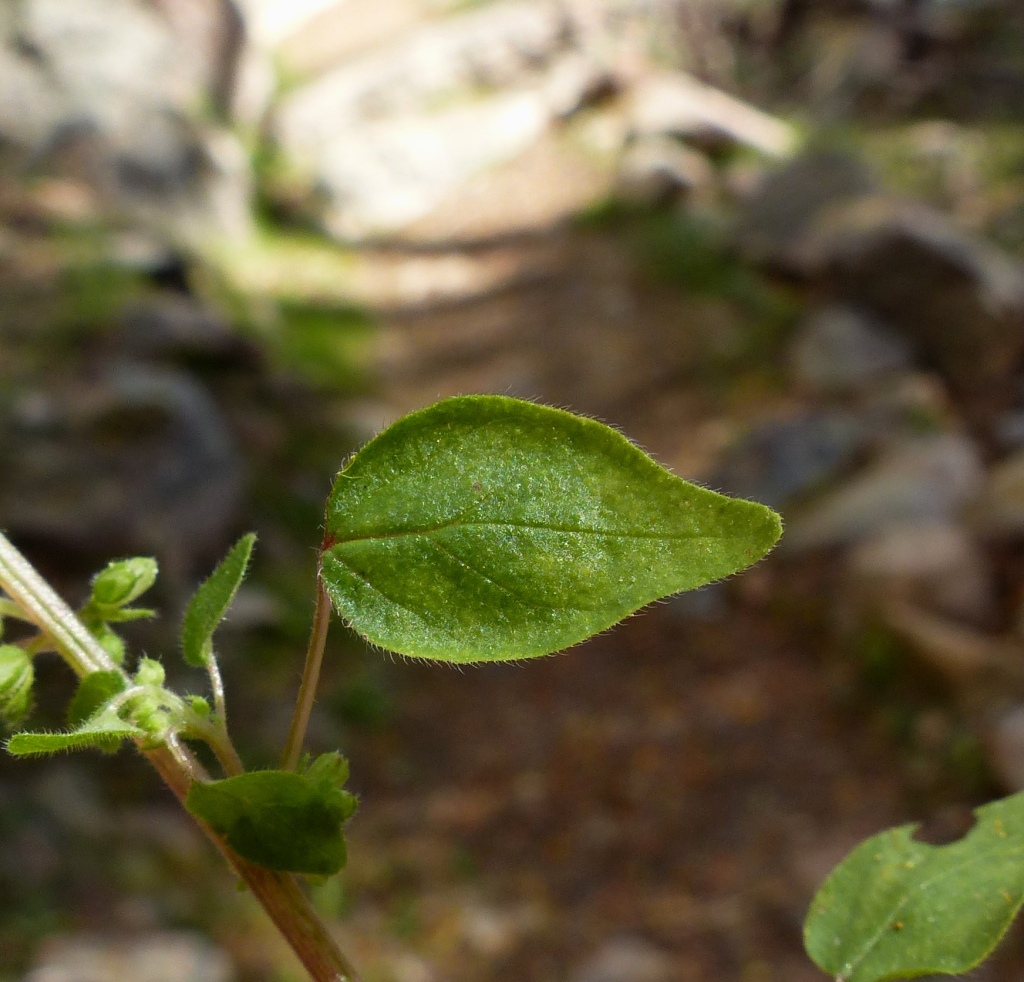Parietaria debilis
G.Forst. Shade PellitoryAnnual herb, 6–30 cm high, not woody at base; stems erect, sometimes ascending, sometimes rooting at nodes, densely covered in curved and hooked hairs, sometimes also scattered glandular and flexuose hairs. Leaf-lamina ovate to broadly ovate, 0.6–4.5 cm long, 4–18 mm wide, more or less delicate, 3-nerved; base subcordate, cuneate or truncate; apex blunt or obtusely acuminate, midvein straight, the lateral veins with delicate tertiary veins. Inflorescence a 2–10-flowered dichasium; central flowers and solitary flower bisexual; lateral flowers female, subtending bracts 3, free or the central bract fused with the 2 shorter lateral bracts, narrowly lanceolate to ovate, incompletely hiding lateral flowers, remaining soft at maturity, green, a delicate reticulate venation sometimes visible, midrib distinct; perianth of all flowers similar, c. 2.0–2.5 mm long, midvein and margins reddish-brown; stigma sessile. Achene 1.2–1.4 mm long, 0.8–0.9 mm wide, mid to dark brown, hard, not crushed or crumbled; apiculum terminal or displaced sidewards. Flowers Aug.–Nov.
LoM, MuM, Wim, GleP, Brid, VVP, VRiv, RobP, MuF, GipP, OtP, WaP, Gold, CVU, GGr, DunT, NIS, EGL, EGU, WPro, HSF, HNF, OtR, Strz, HFE, VAlp. All States. Widespread through temperate regions of the world. Common throughout the State, from shrublands in the northwest, where sometimes forming dense mats beneath shrubs, to coastal scrub on dunes.
Variable in leaf size and shape, petiole length, bract shape, sex of flowers, and the orientation of the apiculum on the nut. Possibly including 2 taxa, one with a terminal apiculum and ovate to broadly ovate bracts (mostly in northern parts of State), the other with apiculum displaced sidewards and the bracts lanceolate to narrowly oblong (mostly southern Victoria).
Gebauer, R. (1996). Parietaria. In: Walsh, N.G.; Entwisle, T.J., Flora of Victoria Vol. 3, Dicotyledons Winteraceae to Myrtaceae, pp. 87–89. Inkata Press, Melbourne.
 Spinning
Spinning




